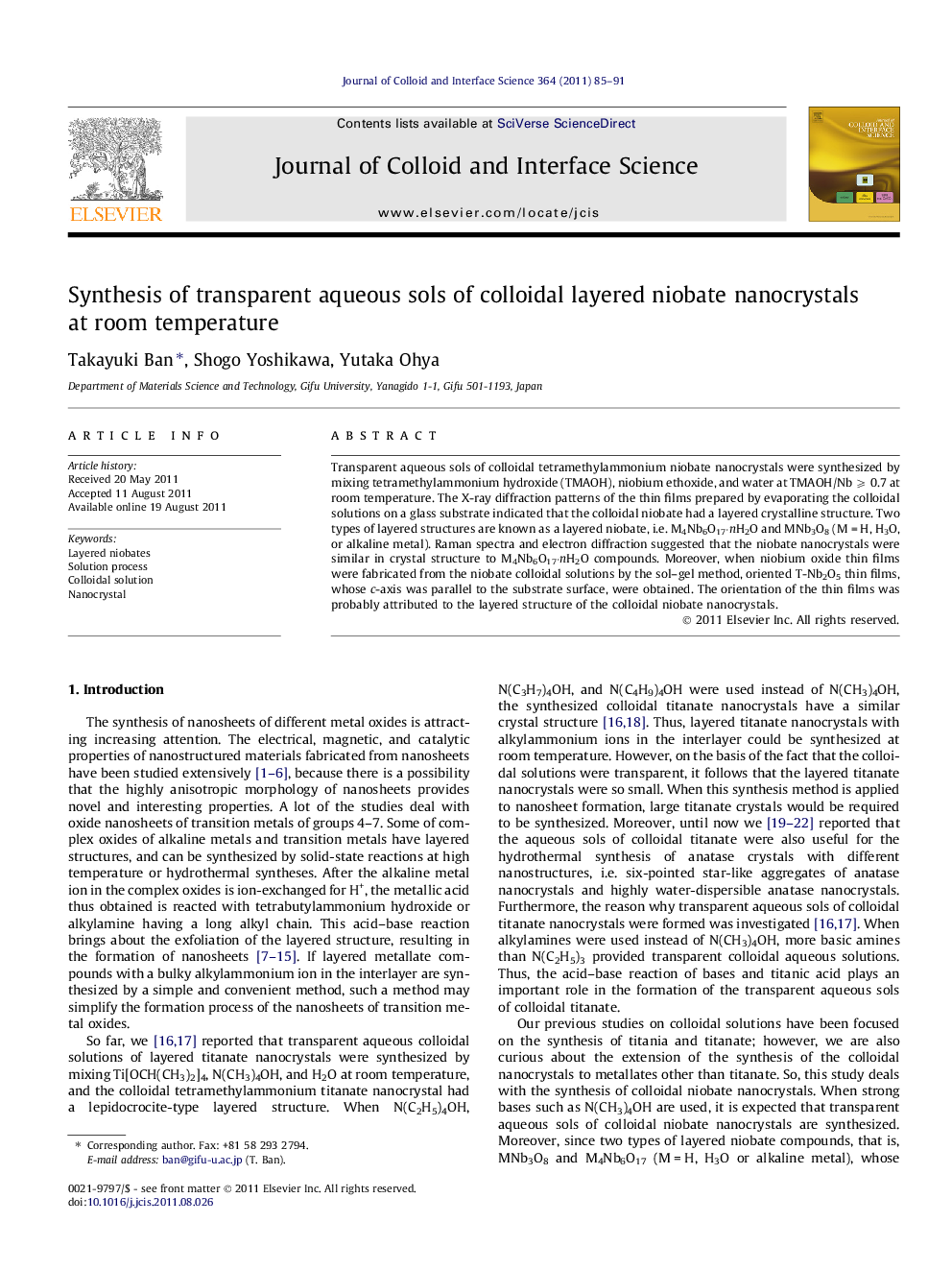| کد مقاله | کد نشریه | سال انتشار | مقاله انگلیسی | نسخه تمام متن |
|---|---|---|---|---|
| 608417 | 880591 | 2011 | 7 صفحه PDF | دانلود رایگان |

Transparent aqueous sols of colloidal tetramethylammonium niobate nanocrystals were synthesized by mixing tetramethylammonium hydroxide (TMAOH), niobium ethoxide, and water at TMAOH/Nb ⩾ 0.7 at room temperature. The X-ray diffraction patterns of the thin films prepared by evaporating the colloidal solutions on a glass substrate indicated that the colloidal niobate had a layered crystalline structure. Two types of layered structures are known as a layered niobate, i.e. M4Nb6O17·nH2O and MNb3O8 (M = H, H3O, or alkaline metal). Raman spectra and electron diffraction suggested that the niobate nanocrystals were similar in crystal structure to M4Nb6O17·nH2O compounds. Moreover, when niobium oxide thin films were fabricated from the niobate colloidal solutions by the sol–gel method, oriented T-Nb2O5 thin films, whose c-axis was parallel to the substrate surface, were obtained. The orientation of the thin films was probably attributed to the layered structure of the colloidal niobate nanocrystals.
The colloidal tetramethylammonium niobate nanocrystals in the synthesized transparent aqueous sols were about 4 nm in size and had a crystal structure similar to layered hexaniobate.Figure optionsDownload high-quality image (155 K)Download as PowerPoint slideHighlights
► Highly water-dispersible niobate nanocrystals were synthesized at room temperature.
► The niobate nanocrystals were similar in crystal structure to M4Nb6O17·nH2O.
► Oriented niobium oxide films were fabricated from the niobate colloidal solution by the sol–gel method.
► The orientation of the Nb2O5 films was attributed to the layered structure of the niobate.
Journal: Journal of Colloid and Interface Science - Volume 364, Issue 1, 1 December 2011, Pages 85–91